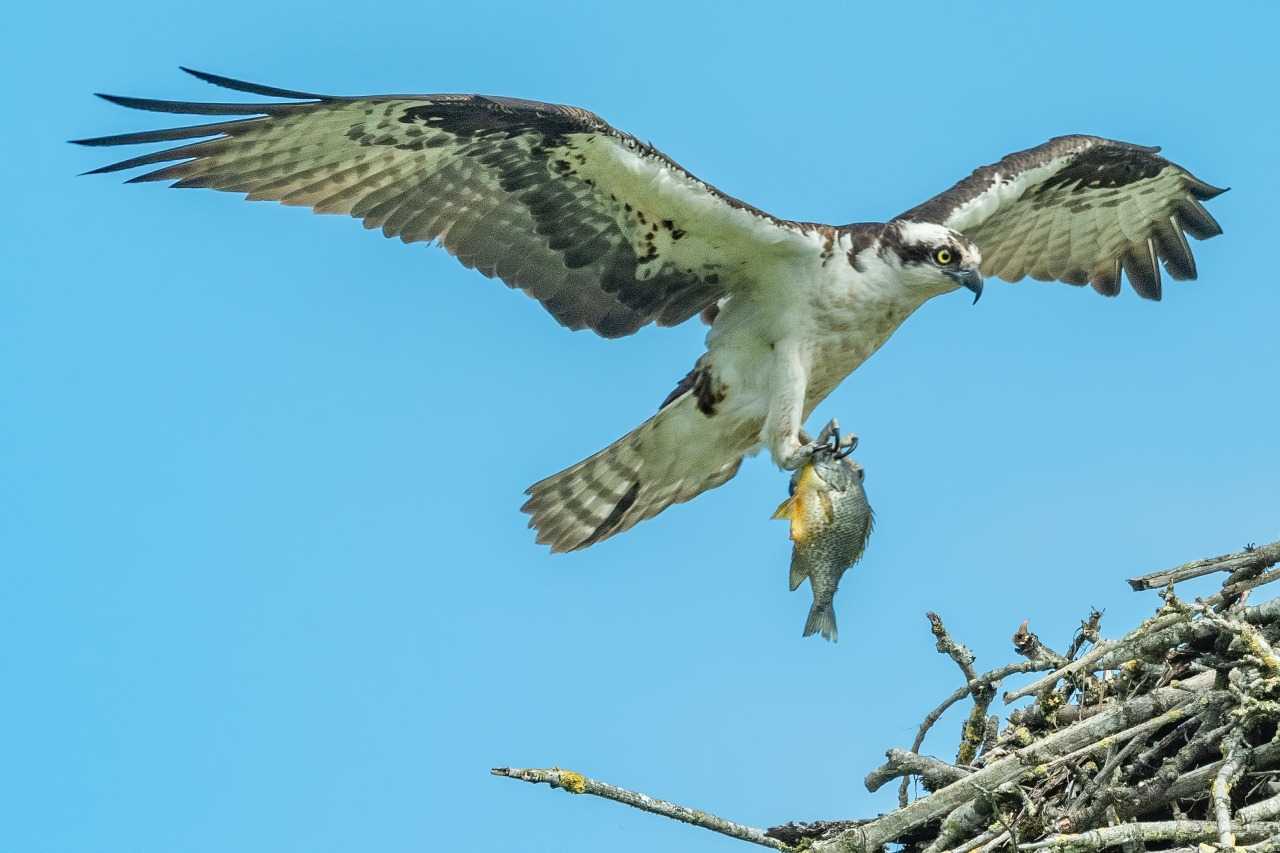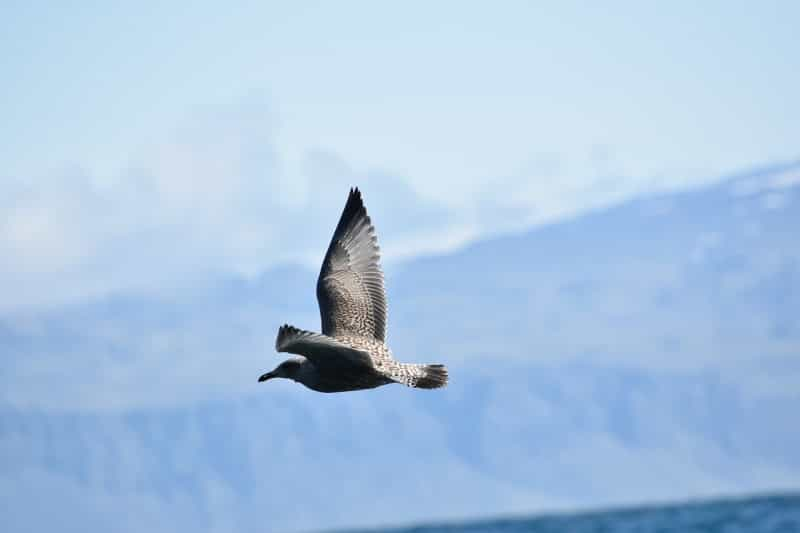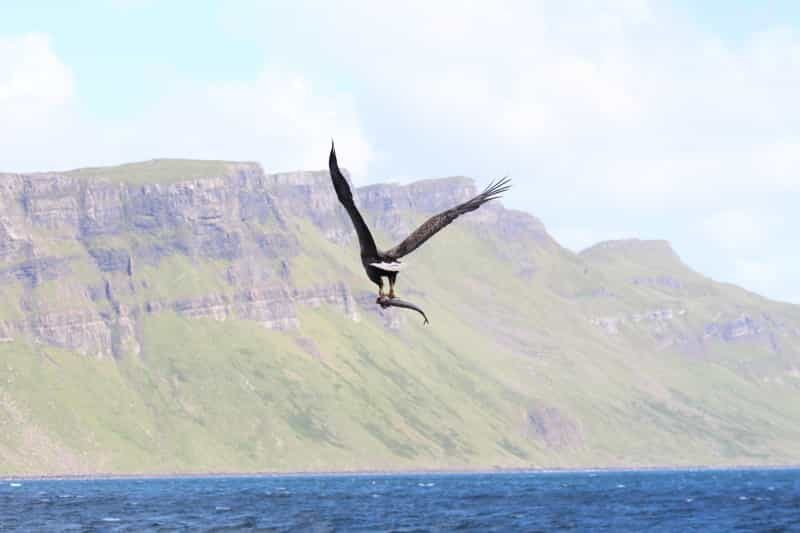Bird Watching Guide for the Scottish Highlands
For both avid spotters and those merely seeking the peace of melodious twitter away from the call of the phone and the chattering of social media, this is our bird watching guide for the Scottish Highlands. Around the Highlands of Scotland, an area that includes its islands, are some of the best places in the British Isles to see rare and special birds.
To combine seabird spotting, wildfowl watching and eagle observing with a good walk, then our guide to the best hiking trails in the Highlands is also a must-read. Looking to make it a short break or a longer holiday? Browse through our comprehensive list of all the best campsites in the Highlands.
And while you’re out and about with the binoculars, remember to visit the RSPB website to enter your findings. The conservation charity has 77 reserves in Scotland, many of them in the Highlands, and runs a national bird spotting survey every year. The Scottish Ornithologists' Club (SOC) also operates its Local Recorders Network where you can find details of how to submit your own trip reports and read in-depth guides to all of Scotland's birdwatching sites.
Here are just a few of the best places to go birdwatching in Scotland.

Loch Garten, Abernethy National Nature Reserve
A place of wild moorland, boggy wetlands, towering pines and soaring peaks, Abernethy National Nature Reserve stretches from the River Nethy to Ben Macdui, the second-highest mountain in Scotland.
Loch Garten lies in the reserve and is the site of the RSPB Osprey Visitor Centre. The area around the freshwater loch has fantastic views of two osprey nests whose visitors return every spring after wintering in West Africa. Bigger than a buzzard, with a wingspan of six feet, ospreys mate for life and return to the same nests in the Highlands to breed every year.
From the centre, woodland walks lead around the loch where lots of smaller birds can also be seen on the feeding stations – including the Scottish crossbill, crested tit and siskin. Goldeneye ducks nest in the trees, upon which great spotted woodpeckers trill and red squirrels scamper. At dusk, wild greylag and pink-footed geese roost while capercaillies make their bizarre sounds ranging from a gurgle to a cork pop – they may be quite difficult to spot, but you’ll know one when you hear it.
To visit Loch Garten easily, browse campsites near Inverness, the ‘Capital of the Highlands’. If you’re new to tenting adventures in Alba, our ultimate guide to camping in Scotland has lots of hints and tips to get you started.
Handa Island Reserve
Every summer, some 100,000 seabirds breed on Handa Island where huge sandstone cliffs rise from the Atlantic. There was once a community on the isle but it was abandoned in the 1840s when the Highland Potato Famine hit hard. The island is reached by a short ferry trip from the harbour at Tarbet, a few miles from Scourie. On the crossing, look out for dolphins, basking sharks, jellyfish and seals. There are volunteers on the island who will help you disembark and act as a site guide to see the best birds and wildlife spots and learn about the history of Handa.
There are many notable seabirds to spot on Handa Island, especially on and around the 115-metre-high Great Stack that juts up from the sea beyond towering cliff edges. Species include puffins, skua, fulmar, guillemot, kittiwake, wheatear and oystercatcher. Beware the skua who may divebomb on occasion, particularly during the breeding season. They aren’t usually of the pecking kind though, and their navigational skills are superior to ours so there’s little to fear. As you walk around the island, lizards will scurry out of the way, rabbits scamper across your path and red grouse call out grumpily when disturbed from the stones of the ruined houses.
Book your stay at the northwestern tip of Scotland at a campsite near Durness

Strathdearn, Findhorn Valley
Strathdearn’s alternative name, the Valley of Raptors, tells you what to look out for on a trip to the birdwatching sites here. The area along the valley of the Findhorn River is known as one of the best places to see the golden eagle and white-tailed eagle, as well as peregrine falcons, merlins and hen harriers. Seeing a golden eagle in flight is one of the most awe-inspiring fairytale-like sights and yet quite common in this part of the snowy north of Scotland, a little north of Aviemore. Above the forest, on the open moorland, is the best place to see the golden eagle and also the white-tailed eagle, which was reintroduced to Scotland from the 1970s onwards.
Holiday in the Highlands at a campsite near Aviemore
The Isle of Mull
The second-largest island of the Inner Hebrides, Mull is an outstanding place to see birds of prey, with several dedicated eagle-spotting hides and the highest breeding density of golden eagles in Europe. Mull is also home to lots of rare raptors and resident and migrant birds. There are boat trips to see white-tailed eagles at very close range as they swoop to pluck fish from the sea.
Upon the scrub and heather moorlands, there is an abundance of skylarks with their vibrant song calls. Meanwhile, short-eared owls, barn owls and pipits make their home in the ancient woodland. The estuaries of Mull come alive in spring and autumn with waders on their way north to the Arctic and south to Africa. Great northern and black-throated divers noisily visit the sea lochs in winter, with the red-throated variety thronging upon the water in summer.
The coastline of Mull and the surrounding islands – Ulva, Iona and Staffa – are fabulous places to see seabirds too. Puffins, guillemots and razorbills jostle for space on the cliffs with rarer species including storm petrels and arctic skuas. Lunga Island, the largest of the Treshnish Isles, is also easily reached from the ports on Mull where there is an enormous colony of puffins that can number up to 5,000 at a time.
Book your island getaway at a campsite on the Isle of Mull

Lochalsh
Mountains, sea lochs and large wooded areas dominate the landscape of Lochalsh, which hosts a wide variety of breeding birds. The Kintail Ridges are home to a large population of golden eagles along with ptarmigan and grouse, plus snow bunting in winter. The mature mixed woodland of Carr Brae has many types of breeding songbirds including pipits, cuckoos, warblers and blackcaps competing in the choir. The narrows of Kylerhea and Glenelg Bay, between Skye and Lochalsh, make a natural route for the gulls, auks, shearwaters, skuas and white-tail eagles that feed in the channels.
And of course, the castle of Eilean Donan – on its small tidal island surrounded by the three sea lochs of Duich, Long and Alsh – is rooted in feathered folklore. The legend of the clan chief’s son who could talk to birds should enthral the kids on a visit. The lochs themselves have sheltered rocky reefs with large beds of horse mussels (referred to as ‘clappy doos’ locally), stunning red flame shells and firework anemones. Turnstones, purple sandpipers, herons and shags are common sights in this watery habitat due to the abundance of food.
Explore Lochalsh from a campsite near Auchtertyre
To learn more about the ancient tales of Eilean Donan and its striking castle, along with the many other fortifications in northern Scotland, check our guide to the best castles to visit in the Scottish Highlands.
And if you’re looking for more things to do in the uppermost reaches of Scotland, we’ve got that covered too in this guide to the highlights of the Highlands.